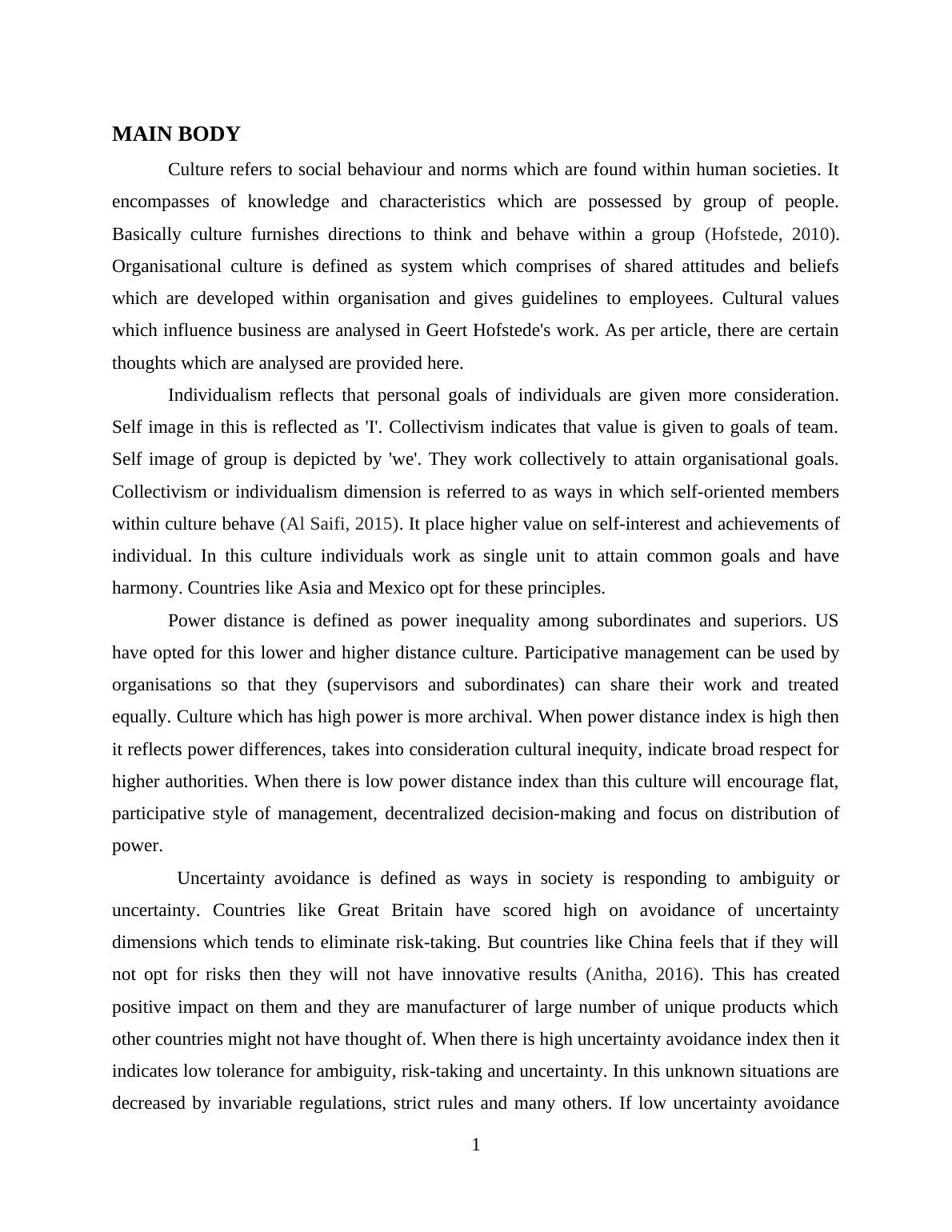Essay on Culture and Social Behavior
Added on 2020-10-22
6 Pages1304 Words471 Views
Individual Essay


MAIN BODYCulture refers to social behaviour and norms which are found within human societies. Itencompasses of knowledge and characteristics which are possessed by group of people.Basically culture furnishes directions to think and behave within a group (Hofstede, 2010).Organisational culture is defined as system which comprises of shared attitudes and beliefswhich are developed within organisation and gives guidelines to employees. Cultural valueswhich influence business are analysed in Geert Hofstede's work. As per article, there are certainthoughts which are analysed are provided here. Individualism reflects that personal goals of individuals are given more consideration.Self image in this is reflected as 'I'. Collectivism indicates that value is given to goals of team.Self image of group is depicted by 'we'. They work collectively to attain organisational goals.Collectivism or individualism dimension is referred to as ways in which self-oriented memberswithin culture behave (Al Saifi, 2015). It place higher value on self-interest and achievements ofindividual. In this culture individuals work as single unit to attain common goals and haveharmony. Countries like Asia and Mexico opt for these principles. Power distance is defined as power inequality among subordinates and superiors. UShave opted for this lower and higher distance culture. Participative management can be used byorganisations so that they (supervisors and subordinates) can share their work and treatedequally. Culture which has high power is more archival. When power distance index is high thenit reflects power differences, takes into consideration cultural inequity, indicate broad respect forhigher authorities. When there is low power distance index than this culture will encourage flat,participative style of management, decentralized decision-making and focus on distribution ofpower. Uncertainty avoidance is defined as ways in society is responding to ambiguity oruncertainty. Countries like Great Britain have scored high on avoidance of uncertaintydimensions which tends to eliminate risk-taking. But countries like China feels that if they willnot opt for risks then they will not have innovative results (Anitha, 2016). This has createdpositive impact on them and they are manufacturer of large number of unique products whichother countries might not have thought of. When there is high uncertainty avoidance index then itindicates low tolerance for ambiguity, risk-taking and uncertainty. In this unknown situations aredecreased by invariable regulations, strict rules and many others. If low uncertainty avoidance1

End of preview
Want to access all the pages? Upload your documents or become a member.
Related Documents
When we talk about the cultural aspectlg...
|7
|1208
|18
Study Skills for Higher Education- Doclg...
|6
|1309
|239
Hofstede's Cultural Dimension Revisitedlg...
|7
|1323
|337
The Cultural Context of International Human Resource Managementlg...
|5
|916
|478
Analysis of Study Skillslg...
|6
|1292
|81
(PDF) A critical discussion of Hofstede's concept of Powerlg...
|6
|1359
|298
